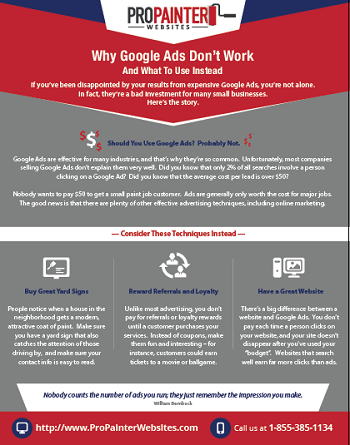Learn How Seasonal Elements Influence Business Outside Paint Success And Uncover The Very Best Times To Ensure Lasting Outcomes For Your Job
Learn How Seasonal Elements Influence Business Outside Paint Success And Uncover The Very Best Times To Ensure Lasting Outcomes For Your Job
Blog Article
Authored By-Burnham Celik
When you're preparing an industrial external paint project, seasonal variables can make or break your results. You'll want to think about how temperature level and humidity influence paint application and drying times. Choosing the appropriate period can ensure your paint sticks effectively and lasts longer. However which periods are genuinely the very best for this kind of work? Let's check out the crucial elements that can affect your task's success.
The Influence of Temperature on Paint Application
When you're preparing a commercial external paint job, the temperature can dramatically affect exactly how well the paint adheres and dries.
Preferably, you wish to repaint when temperatures range between 50 ° F and 85 ° F. If it's too chilly, the paint may not heal appropriately, causing problems like peeling off or breaking.
On the other hand, if it's too warm, the paint can dry as well promptly, avoiding appropriate adhesion and causing an uneven finish.
house painters in minnesota need to additionally consider the time of day; early morning or late afternoon supplies cooler temperature levels, which can be more positive.
Always check the producer's referrals for the particular paint you're using, as they often provide guidance on the perfect temperature array for ideal outcomes.
Humidity and Its Impact on Drying Times
Temperature level isn't the only environmental variable that influences your business external painting project; moisture plays a substantial duty too. High moisture levels can slow down drying out times significantly, influencing the general high quality of your paint task.
When the air is saturated with wetness, the paint takes longer to treat, which can result in concerns like poor attachment and a greater threat of mold development. If you're repainting on a particularly humid day, be prepared for extended wait times between layers.
It's critical to keep track of neighborhood weather conditions and strategy accordingly. Preferably, go for moisture degrees between 40% and 70% for optimal drying out.
Maintaining these factors in mind guarantees your job stays on track and provides a long-term finish.
Best Seasons for Commercial Outside Paint Projects
What's the most effective time of year for your business exterior paint tasks?
Spring and early loss are typically your best choices. Throughout these seasons, temperatures are light, and humidity degrees are commonly reduced, producing ideal conditions for paint application and drying out.
Stay clear of summertime's intense heat, which can trigger paint to dry as well rapidly, resulting in poor bond and finish. Similarly, winter's cold temperature levels can hinder proper drying out and curing, running the risk of the durability of your paint job.
Aim for days with temperatures in between 50 ° F and 85 ° F for optimal outcomes. Remember to inspect Related Site for rain, as wet problems can wreck your project.
mouse click the next page around these variables ensures your painting task runs efficiently and lasts longer.
Verdict
Finally, intending your industrial external painting jobs around seasonal considerations can make a significant difference in the end result. By scheduling job during the perfect temperature levels and moisture degrees, you'll make certain better attachment and drying out times. Bear in mind to watch on neighborhood weather forecasts and select the correct time of year-- spring and early autumn are your best options. Taking these actions will aid you accomplish a sturdy and specialist finish that lasts.
